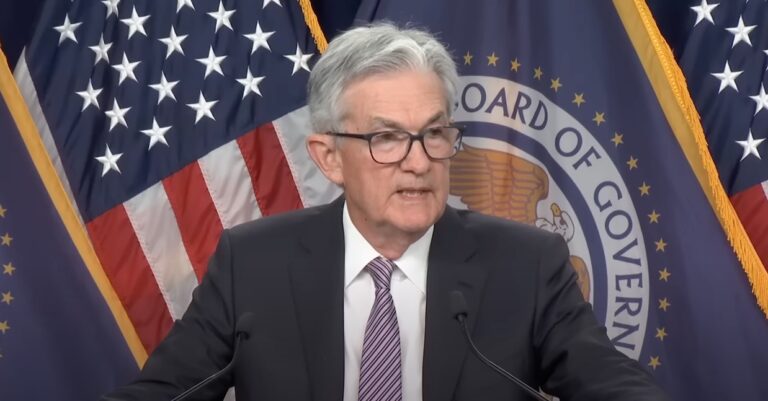Rick Santelli is a well-known figure in the financial news world, serving as an editor for the CNBC Business News network. Born on July 6, 1956, Santelli has been with CNBC since June 14, 1999, where he has made a name for himself by reporting primarily from the floor of the Chicago Board of Trade. Before joining CNBC, he held the position of vice president for an institutional trading and hedge fund account, focusing on futures-related products. He remains a prominent voice on CNBC, providing live reports from the Chicago Mercantile Exchange on topics such as interest rates, foreign exchange, and the Federal Reserve and offering analysis on the U.S. economy, inflation, GDP, payrolls, and housing.
On February 8, Santelli provided an insightful report on the latest activities in the bond market during his appearance on CNBC’s “The Exchange” program.
Bond Market Concepts Explained
- 30-Year Treasuries: These are long-term debt securities issued by the U.S. Treasury to finance government spending. The “30-year” term refers to the bond’s maturity, meaning the time until the principal amount must be repaid. These bonds pay interest to the holder every six months until maturity.
- Yield: The bond yield is the return an investor will receive by holding the bond to maturity. It inversely relates to the bond’s price: as the price goes up, the yield goes down, and vice versa.
- Tailing and Stopping Through: “Tailing” refers to a situation where the yield at which bonds are sold is higher than the yield just before the auction (indicating lower demand), which is considered negative. “Stopping through” means the auction yield is lower than expected, indicating strong demand and positive for the seller.
- Bid-to-Cover Ratio: This ratio compares the total value of bids received in the auction to the amount of securities offered for sale. A higher ratio indicates stronger demand.
- Indirect and Direct Bidders: Indirect bidders include foreign central banks and other institutional investors, while direct bidders are domestic financial institutions. Their participation levels can provide insights into market demand and confidence.
Summary of Santelli’s Report
- Auction Recap: Santelli began by summarizing the week’s bond auctions, highlighting that the final auction involved the sale of $25 billion in 30-year Treasury bonds. This completed a total of $121 billion in coupon supply across three different maturities: 3-year, 10-year, and 30-year bonds.
- Auction Results: The 30-year bond auction achieved a yield of 4.36%. Santelli emphasized the auction’s success by noting that it was “on the screws,” meaning it matched the expected yield closely, and actually “stopped through” by two basis points, indicating it sold at a slightly lower yield (higher price) than anticipated, which is beneficial for the seller—in this case, the government.
- Bid Metrics: The auction had a bid-to-cover ratio that matched the ten-auction average, indicating healthy demand. The indirect bidder participation was the best since June of the previous year. However, direct bidder participation was the lowest since August 2020, suggesting a decrease in purchases from domestic institutions like pension funds and hedge funds.
- Dealers’ Participation: Dealers took a slightly higher percentage of the bonds than the average of the last ten auctions.
- Market Reaction: Despite the auction’s success, Santelli pointed out a key market indicator to watch: the high yield close for 30-year bonds in 2024, which was 4.41% at that time. He suggested that if yields approach this level again, it could trigger selling despite the positive auction results.
During a Bloomberg TV interview on February 2, Jeffrey Rosenberg, a senior portfolio manager at BlackRock Inc., offered his perspective following the release of the January jobs report and the outcome of the Federal Reserve’s recent FOMC meeting.
Rosenberg advised viewers against making hasty judgments based on the initial reaction to the jobs report, emphasizing the need to analyze deeper factors. He highlighted the typical seasonality of the January jobs report, mentioning that expectations for this period tend to vary widely and that January often brings positive surprises. This seasonal effect, Rosenberg noted, could exaggerate the robustness suggested by the payroll figures.
He also commented on the unexpected rise in payrolls, urging a careful interpretation of these numbers due to possible nuanced shifts in employment. He observed that the mix of jobs added, with more higher-paying roles and a shorter average workweek, might artificially enhance the figures. Importantly, he referred to the Employment Cost Index (ECI) released that week, which pointed towards wage disinflation, mitigating the impact of the positive job report.
Rosenberg discussed the broader implications for the labor market, stating that the main concern should not be whether the Federal Reserve will tighten its policy, but the rate at which it returns to standard levels. He suggested that the bond market’s anticipation of swift normalization might not match the real economic scenario, advocating for a gradual approach by the Fed.
He also interpreted the Federal Reserve’s response strategy, based on the recent news conference. Rosenberg believes the Fed’s openness to stronger data, coupled with its readiness to reduce rates if the economy falters, is validated by the latest jobs data. This approach, he argues, indicates that the economic robustness supports a more deliberate pace of policy normalization, avoiding hasty changes.
Regarding investment strategies, Rosenberg showed a preference for the shorter end of the US Treasury curve, influenced by the recent economic indicators and the Fed’s policy direction. He pointed out that while investors traditionally favored the longer end of the curve for security, the current environment makes the short end more attractive due to expected declines in interest rates. He cautioned that the longer end is susceptible to rises in term and inflation premiums, advocating for investments in the short end of the curve to achieve portfolio equilibrium.









